In this review, we’re going to take an in-depth look at Zero-K, an open-source real-time strategy game for PC (Windows/Linux/Mac). This epic free RTS has been going since 2010 and is still as cool as ice over ten years later.
Zero-K is a fast-paced, space-themed RTS that takes its core inspiration from an even older game, Total Annihilation (1997), from which it has adapted most of its essential gameplay, buildings, and units. It’s powered by Spring Engine, a 3D game engine specifically designed for RTS, and, being open source, is free to download at the Zero-K website or on Steam.
Some of Zero-K’s core features include:
- Single player campaign and online multiplayer (1v1, teams, free-for-all, and coop).
- Competitive matchmaking with ELO-based ranking system.
- Flat technology tree with a choice of more than 100 units from 11 factories.
- Realistic unit and projectile physics that simulate the real world in 3D.
- Terraforming (dig holes and trenches or build walls, platforms, and towers).
- RPG-like hero system with a Commander unit that leads your army.
Sound pretty cool? I’d say so. Let’s start this review by looking at how most people get introduced to the game, with single player mode.
Contents
Campaign
The single player campaign takes you on an adventure through a galaxy full of ruined yet still dangerous planets. There are no fancy cinematics to guide the narrative but your goal is clear: to conquer the galaxy, planet by planet, by commanding various factions and unlocking new technologies along the way.
Each planet has something to teach you about the game, and as your journey continues, you start to find yourself more and more comfortable with the many units available to command, with their myriad of weapon types such as machine guns, lasers, rockets, as well as some interesting sci-fi abilities ranging from gravity-pulling/pushing, cloaking fields, and teleportation. This makes it worth your while to tackle at least the first few missions before getting started with multiplayer matches.
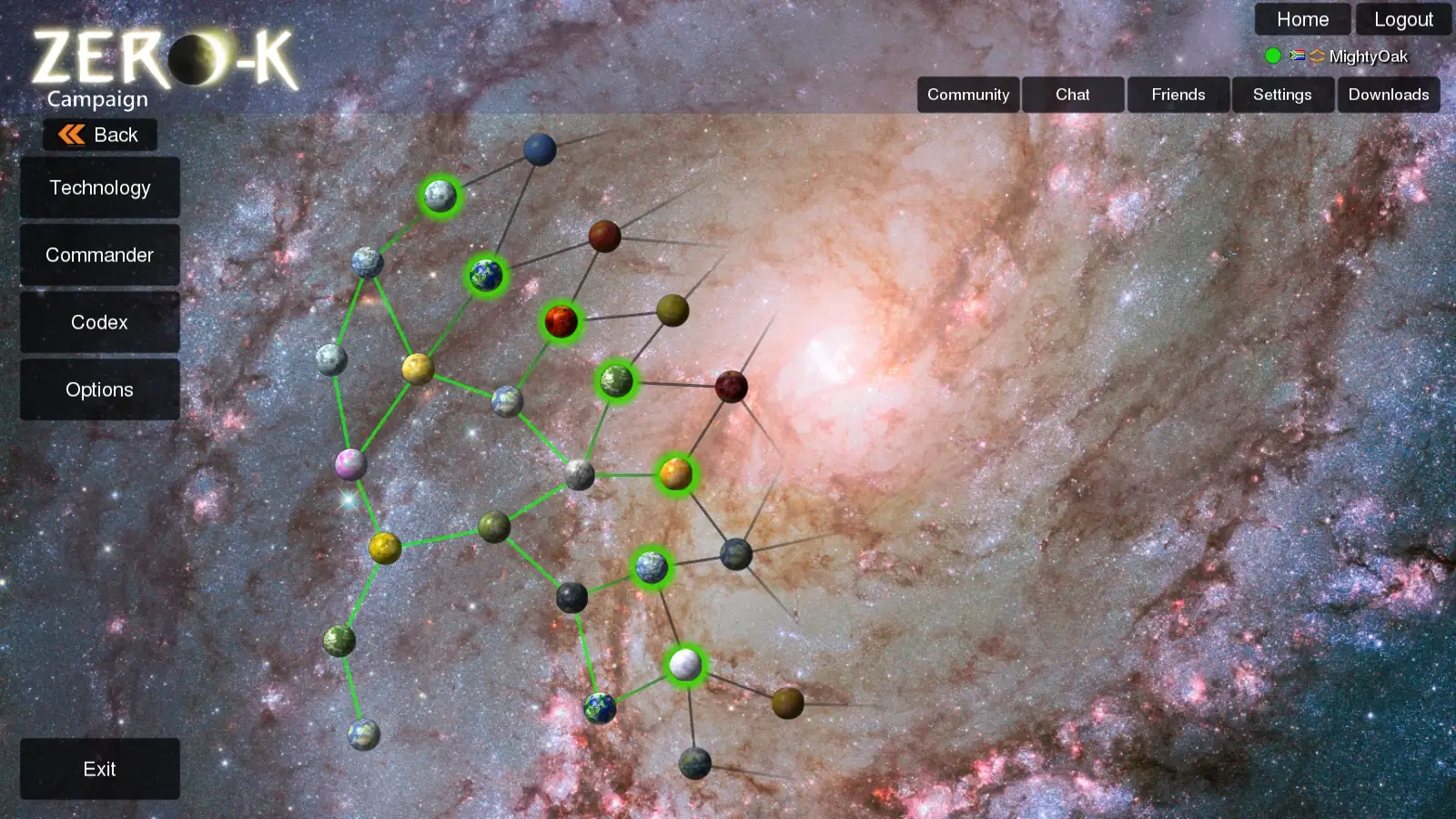
Starting out easy, the missions are progressively more challenging to the point of “extremely hard”, even on normal difficulty mode. The enemy AI is good at throwing everything it has at you constantly, which keeps you on your toes and will likely have you restarting over and over until you find the right approach.
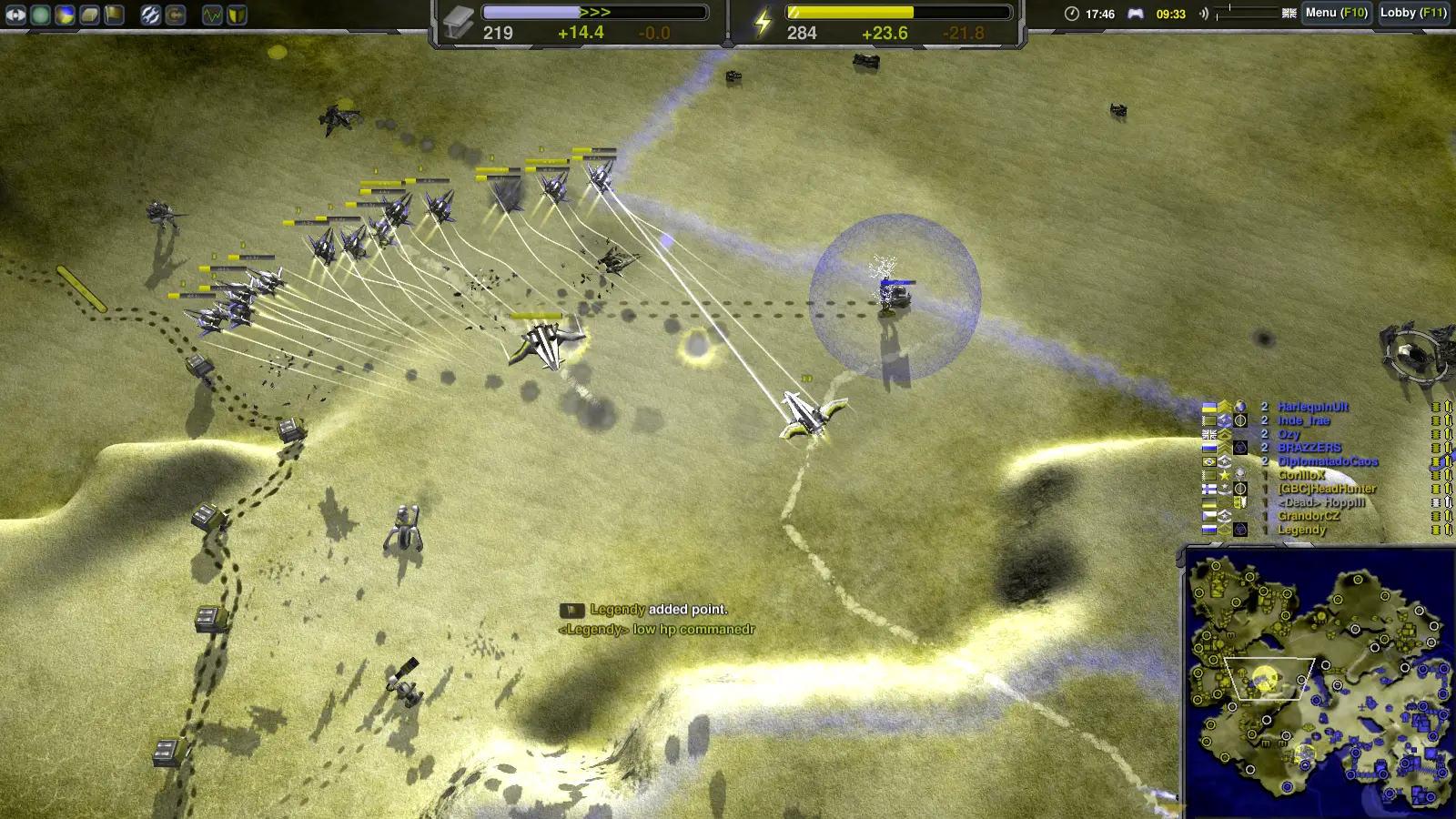
To help you along the way towards galactic domination you are given a Codex, which is like your war journal, where you can review where you’ve been and reflect on your past adventures. It also teaches you about how best to use the different units and buildings you will unlock. Every successful mission aims to teach the basic usage of units and some of their various combat scenarios, so it is wise to pay attention to what the game is trying to tell you.
Personally, I am not too enthusiastic about single player mode in RTS games, so I haven’t finished the entire campaign yet. Instead, after dipping my toes in the water with a few days’ worth of missions, I skipped straight over to online multiplayer, which is what I’m really interested in.
Multiplayer
Multiplayer is where Zero-K shines, as it should be with any good RTS. In team-based matches, you absolutely must collaborate with your team or else fail hopelessly, because if you aren’t communicating with one another, you can bet that the opposing team is. And most of the time, they’re not just communicating. Oh no, it’s much worse than that. They’re actively scheming, and not only through chat…
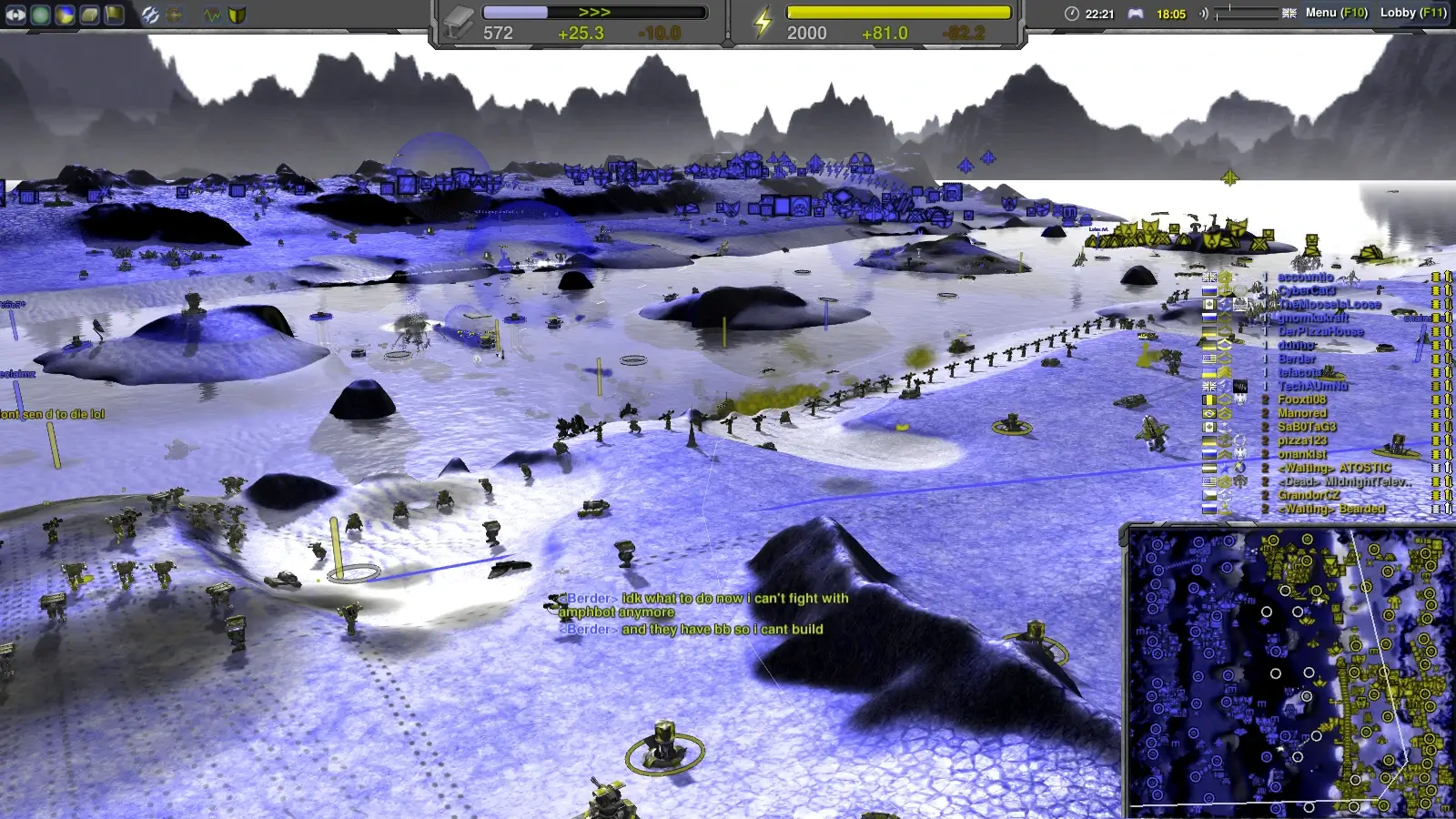
Draw anywhere with your mouse
One of Zero-K’s most-loved multiplayer features is the ability to draw directly on the battlefield with your mouse, like you would do with the pencil tool in Microsoft Paint. This makes the element of strategy highly social and collaborative, as teammates can easily mark territorial lines for future conquest and defense, or coordinate a tag-team assassination of an enemy commander.
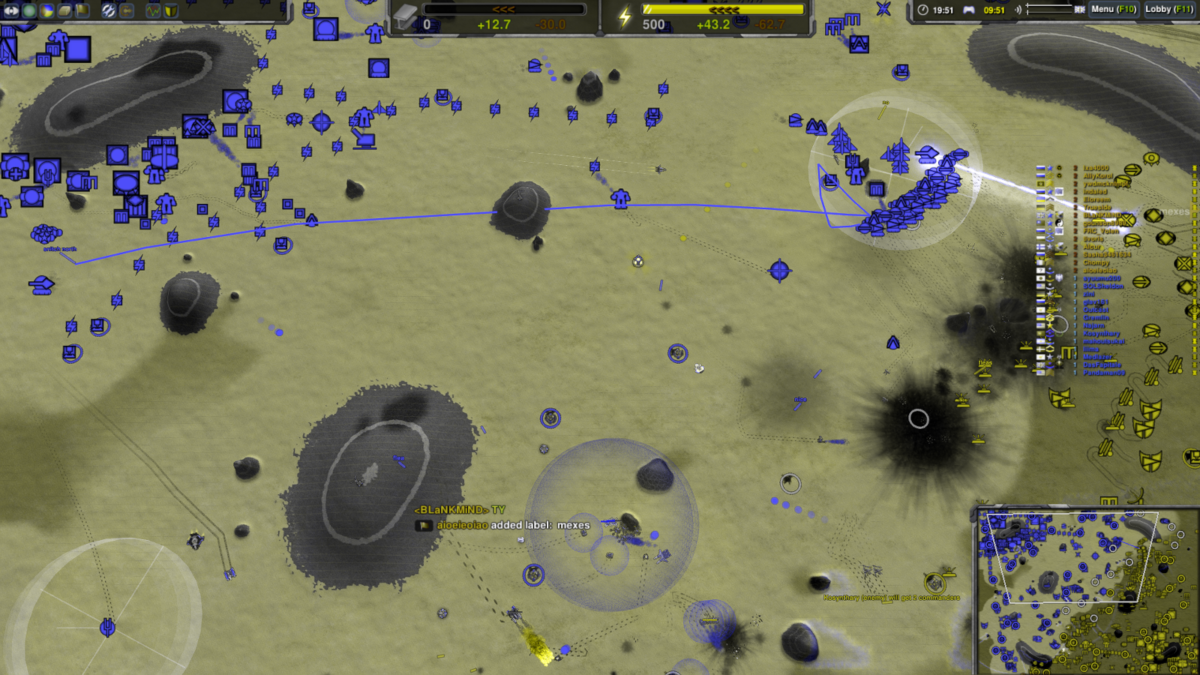
You can also quickly add pings and text labels anywhere on the map to alert everyone of an incoming raiding party, which often escapes notice amongst everything else that is going on.
The drawing feature adds a whole new dimension that really drives home the idea that you are battling in real time with other people, and that properly communicating is key to victory. Or, you know, you could always strike up a quick, friendly game of Pictionary with teamies or show off your artistic ability while watching your combined armies roll over your opponents in a massive match-winning showdown. Whatever floats your boat! (But do be respectful, and try not to obscure the viewing field for your teamies.)
Truly worldwide
Being able to draw directly on the battlefield is certainly not the only aspect that makes Zero-K multiplayer unique. What makes it truly fun is that you can enjoy a match with up to 32 players on a single map with nearly as many different nationalities playing at one time. This is because the servers are not based on geographical regions, where only Europeans play against other Europeans, or Americans against other Americans, as in many mainstream titles.
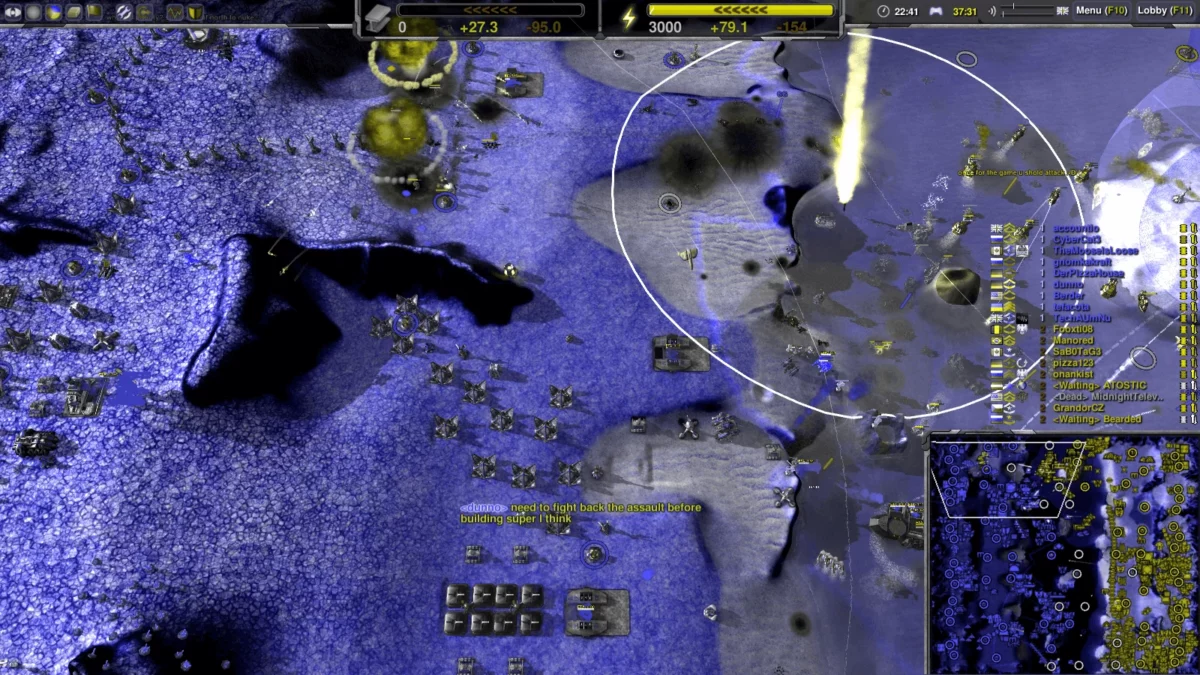
In most online multiplayer games, high ping gives you a subtle but noticeable disadvantage, but with Zero-K there isn’t much to be gained from being able to micromanage units with cat-like reflexes, as long as your macro strategy is solid and you are paying attention to the battlefield, countering where necessary. Of course, it’s nice to have snappy ping, but it’s not essential. All the players in a given match may have above 200ms ping, and the game works well, on the whole, for everyone.
Chat communication is text-based only (that is, there are no voice features in-game – no big deal). In the heat of the battle it can be tough to juggle micro/macro at the same time as scheming with teamies, given the pace of the game, but it is well worth the effort.
Most of the time, it is easy to find a lobby, since there are games running almost continuously on one or two of the “Teams All Welcome” public servers. And if you’re into custom game modes such as Cooperative mode versus AI, there are usually a handful of those kinds of matches running at any given time.
Games tend to get started quickly, with no fussing around in lobbies. Sometimes it’s nice to chit-chat after a match in the game lobby, but there’s a separate in-game chat interface for that, thankfully. The one downside with multiplayer, in general and from a people-perspective, is that because there are not as many players as in a game like StarCraft II, you can sometimes get cabin fever by regularly playing the same matches with the same pool of players.
On the flip side, this means that you can make meaningful friendships because everyone essentially knows each other after playing for some time. And if you have decided that your calling in life is to troll, then good luck to you, my friend! Some forms of trolling, such as trying wacky, high-risk strategies are valid enough if not used too frequently, but at that point, you have to be really good at the game to avoid being accused of being a troll by ruining the game.
“It’s not crazy if it works!”
– An overconfident newbie defending their obviously terrible, horrible, bad bad plan.
On the whole, the multiplayer gameplay is dynamic, especially in team games, and well balanced. For example, it is easily noticed when a team member is AFK at the start of the game, because even a single missing player can throw off the balance system and make for a really tough match.
Maps galore
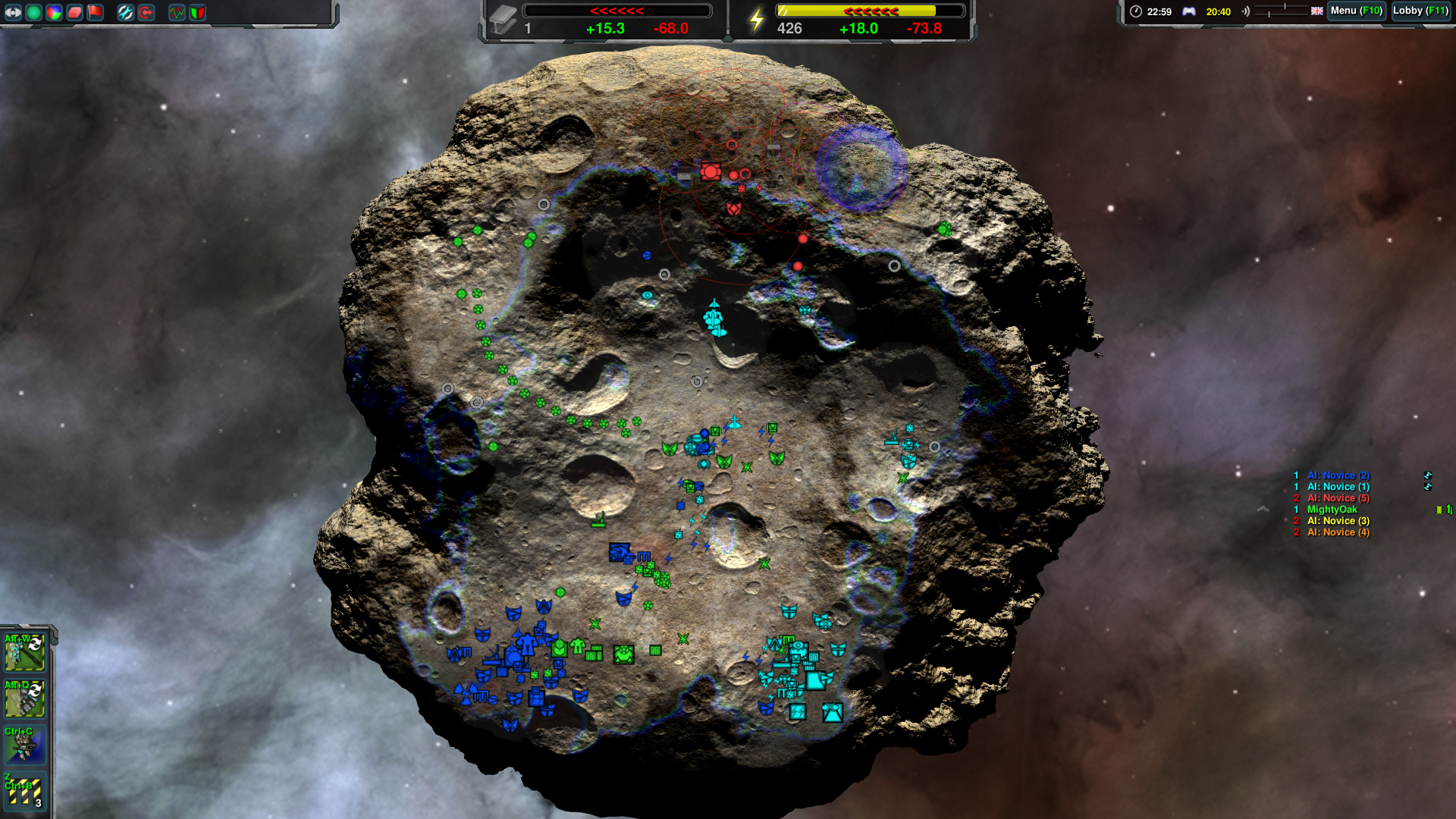
There are a ton of maps to play on, which can be a double-edged sword. Many players who have high internet costs are drawn to the game because of its relatively small initial download size, but this can be misleading. Each new map you download has an average size around 40 MB, up to a maximum of about 200 MB, and there are a lot of them.
Most of the team-based maps are as close to symmetrical on either opposing side as possible, but you also see some interesting non-symmetrical FFA (Free-For-All) maps such as this fun rendition of Europe:
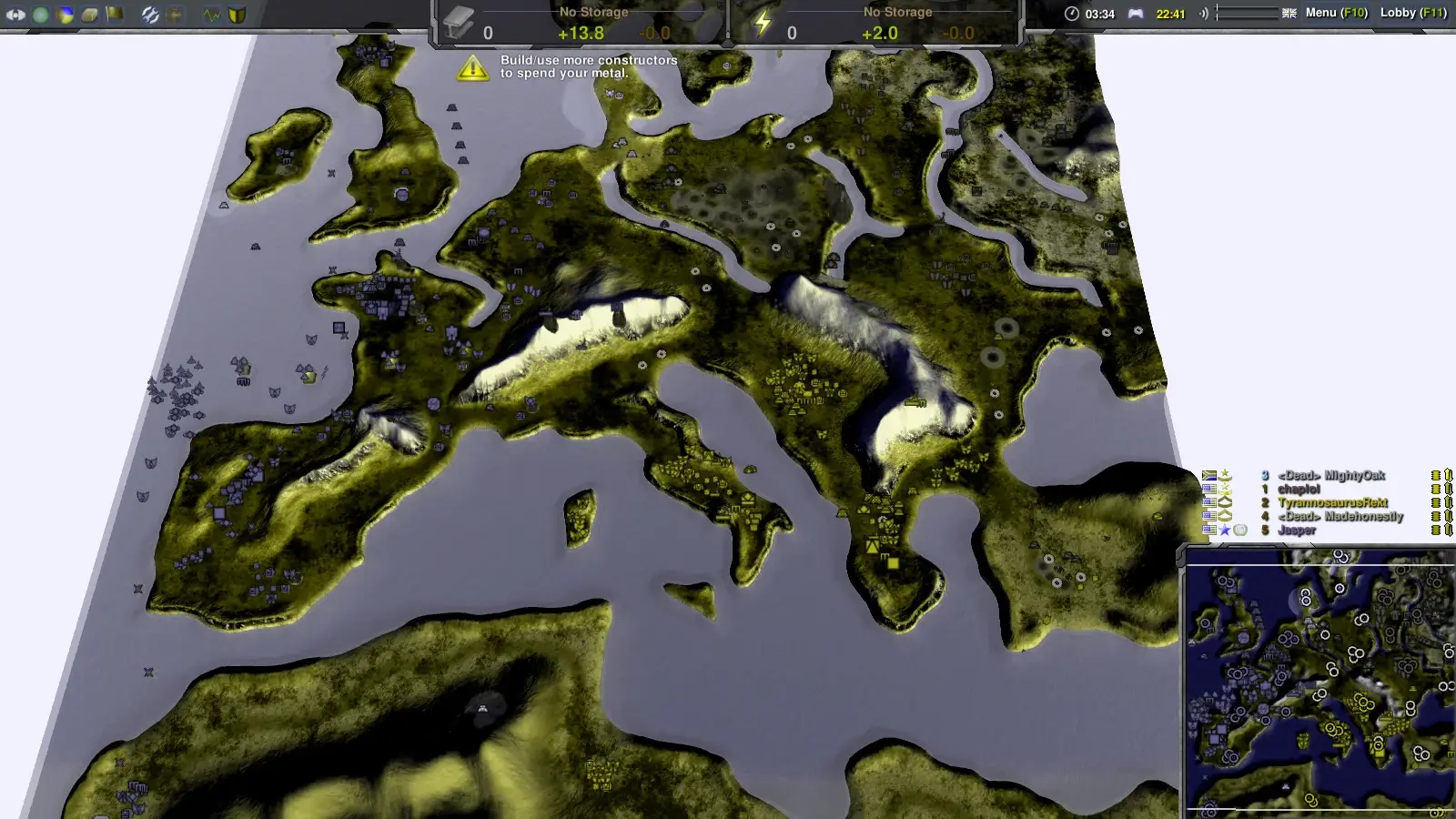
One of the reasons I picked this game was because I wanted a lightweight RTS that wouldn’t eat up all my data, but after downloading many new maps, my map folder is now over 10 GB. This is a small gripe, however, when you consider that all new maps are provided for free, instead of being bundled inside a paid DLC (Downloadable Content) pack as with many other RTS games. And who wouldn’t want more options for maps, anyway?
Here’s an example of one of the more challenging maps, terrain-wise:
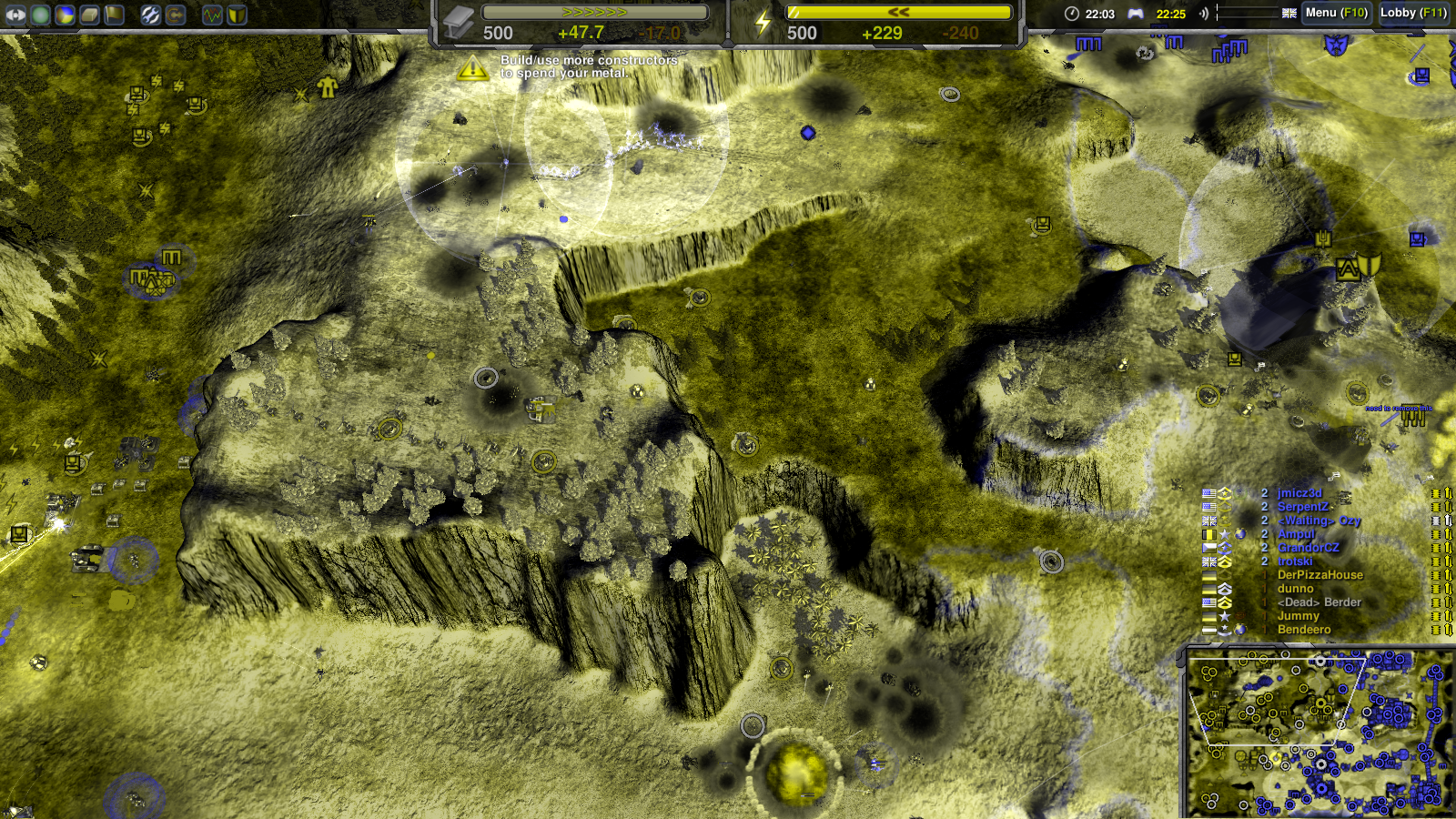
Gameplay
Now that we have covered the campaign and multiplayer at a general level, let’s talk about the actual gameplay. Zero-K’s gameplay is built around high-octane micromanagement while at the same time placing great importance on macromanaging your economy and base-building. The overall pace is extremely focus-intensive and doesn’t allow for a single boring moment. If you stop concentrating for more than a minute, you are toast, and games can run from 10 minutes to over an hour.
Once you get the hang of it, though, it’s both relaxing and exhilarating, because you can try an endless amount of strategies with any combination of units and buildings. And because the game simulates realistic physics, there are some really wacky tactics available to you when you combine something like the Lobster (which launches units into the air for a short distance) with a massive artillery battleship, for example.
As for unit variety, there is something for everyone: tanks, ships, hovercrafts, airplanes, jump bots, cloak bots, and more. Many of the maps are designed to favor at least a few different types of units at once, such as sea maps with strips of land, or mountainous maps with stretches of flat terrain.
Then you get the “big guns” which are called Striders, like the super-tall Paladin or the Dante, a tough, fire-flinging mechwarrior. One might think that with all these different factories and unit types there would be serious balance problems, but thanks to the continuous refinement over the years by several active developers, this isn’t the case.
The unit AI is intelligently thought-out and each unit has its own combat style according to its strengths and weaknesses. This, at least, gives some respite from having to micromanage too closely, and lets you take your time to oversee your bigger-picture strategies.
When you zoom in, you see your units and buildings in 3D, but zooming out, everything changes to symbols that represent each different unit and building. Until I had learnt which symbols corresponded with which units, I had a tough time navigating the zoomed-out view, but once I got over the learning curve it became a breeze to quickly identify units and make sound strategic decisions.
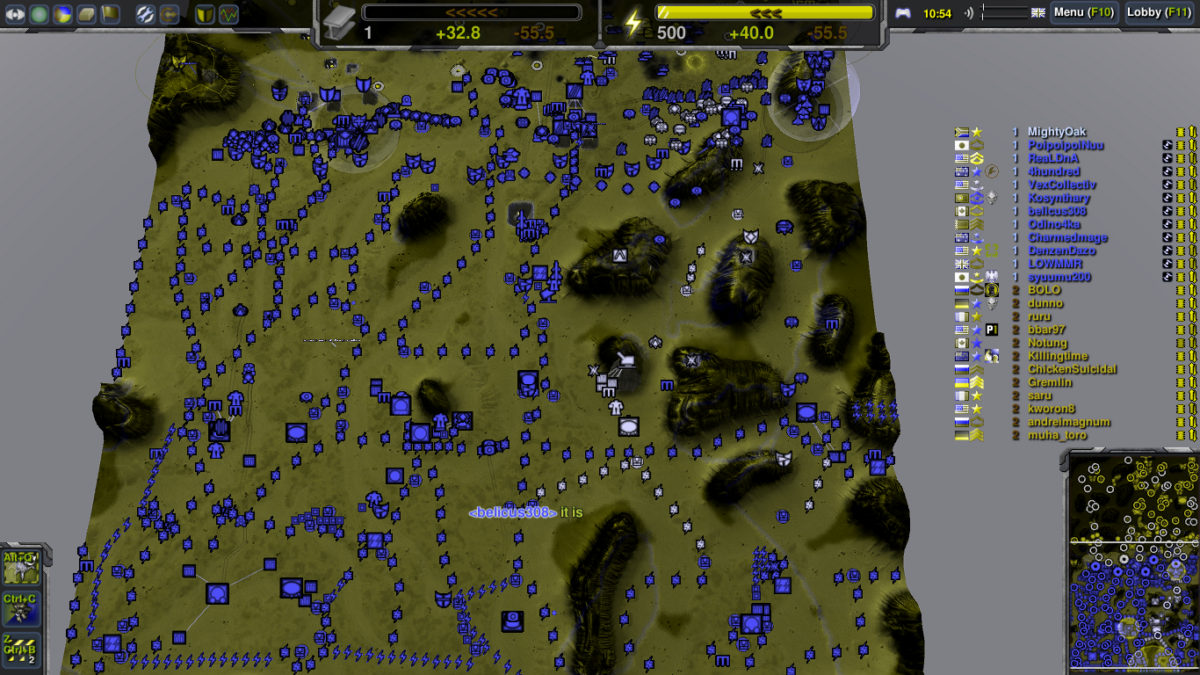
Beyond the smart unit AI, what also has me impressed is how much control you have over your units’ behaviour, especially when combined with various hotkeys. You can draw paths and patrol routes for them to follow, and best of all, you can draw lines with your mouse to arrange units in any formation you like.
When it comes to pumping out units and planning your base-building, the Shift and Spacebar keys are a godsend, because they enable a type of queuing mechanism that lets you quickly force something to the beginning (Spacebar) or end (Shift) of the build queue without messing up what you’ve already queued. For new players, I would say this is one of the first things you should master if you want to play at a competitive level.
There is also a custom widget system, which I haven’t used yet, that lets you customize the behavior of units in strategic ways.
Build anything at any time
Unlike many other RTS games, Zero-K has a flat technology tree, which means that all units and buildings are fully available from the start, and no research is needed to unlock anything.
This was a surprisingly refreshing way to play, as I am much more familiar with tech trees that need to be gradually researched, and I enjoyed the idea so much I have had to be reprimanded by teammates more than a few times to start small and build up slowly to the big monster units and buildings in the mid to late game.
Base-building
Building your base is fun! All buildings can be placed in one of four directions (North, East, South, West) and they can be either buried deep in the earth or raised up high, as if on a pedestal, platform, or tower. It takes a certain elegance to expand your base in a strategic manner, and there are a variety of ways to do so, depending on whether you are more of an offensive or defensive player.
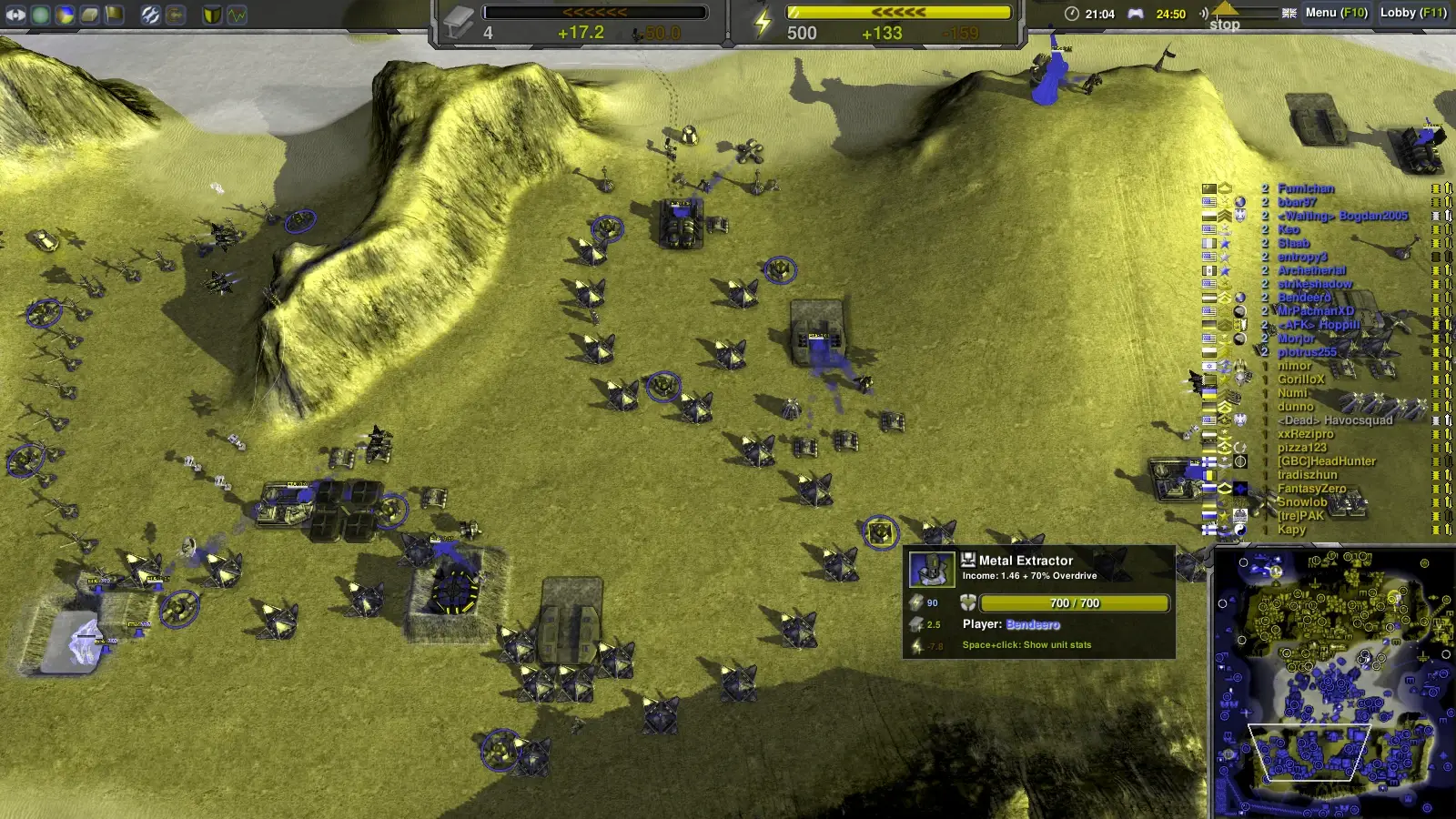
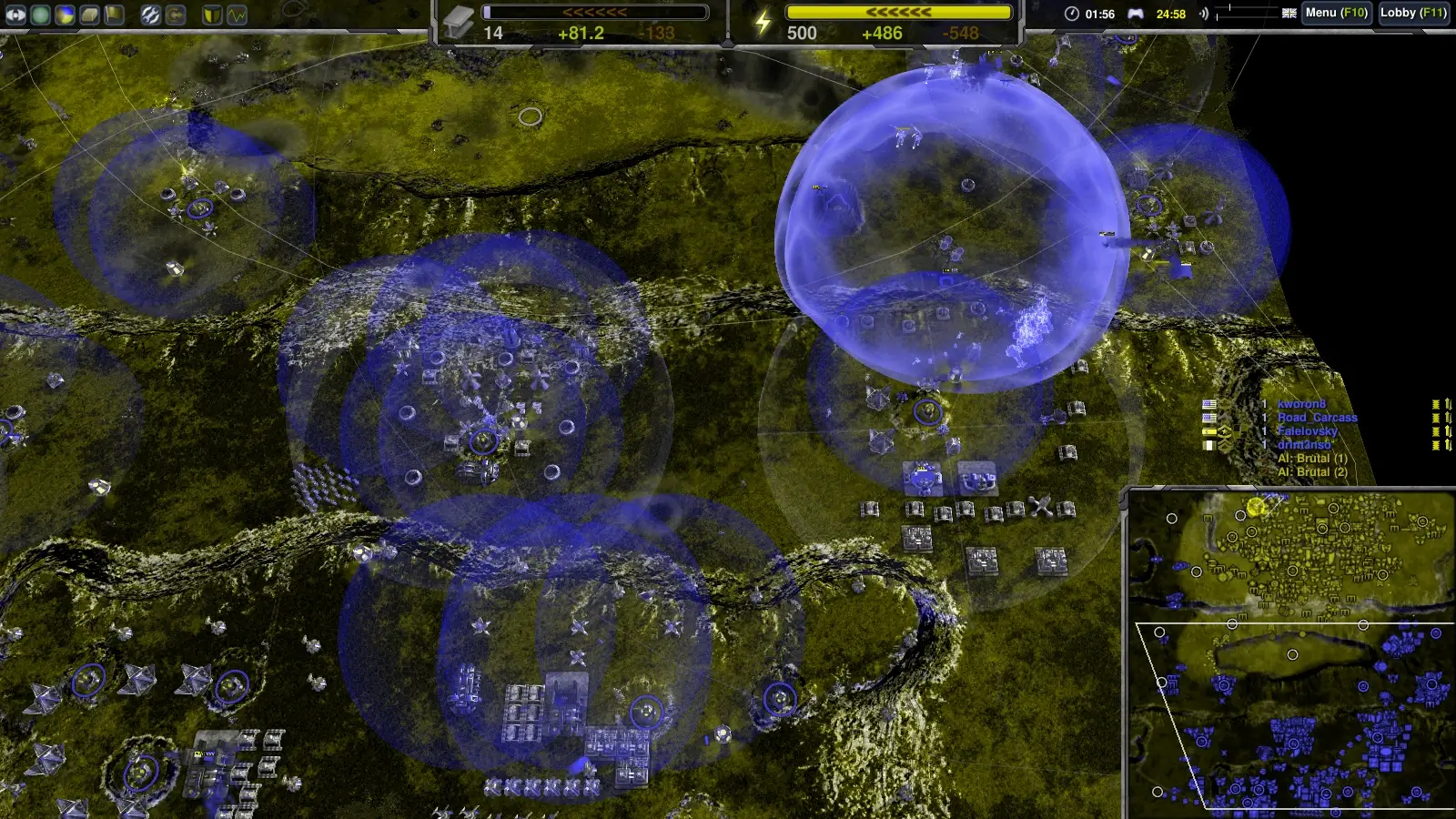
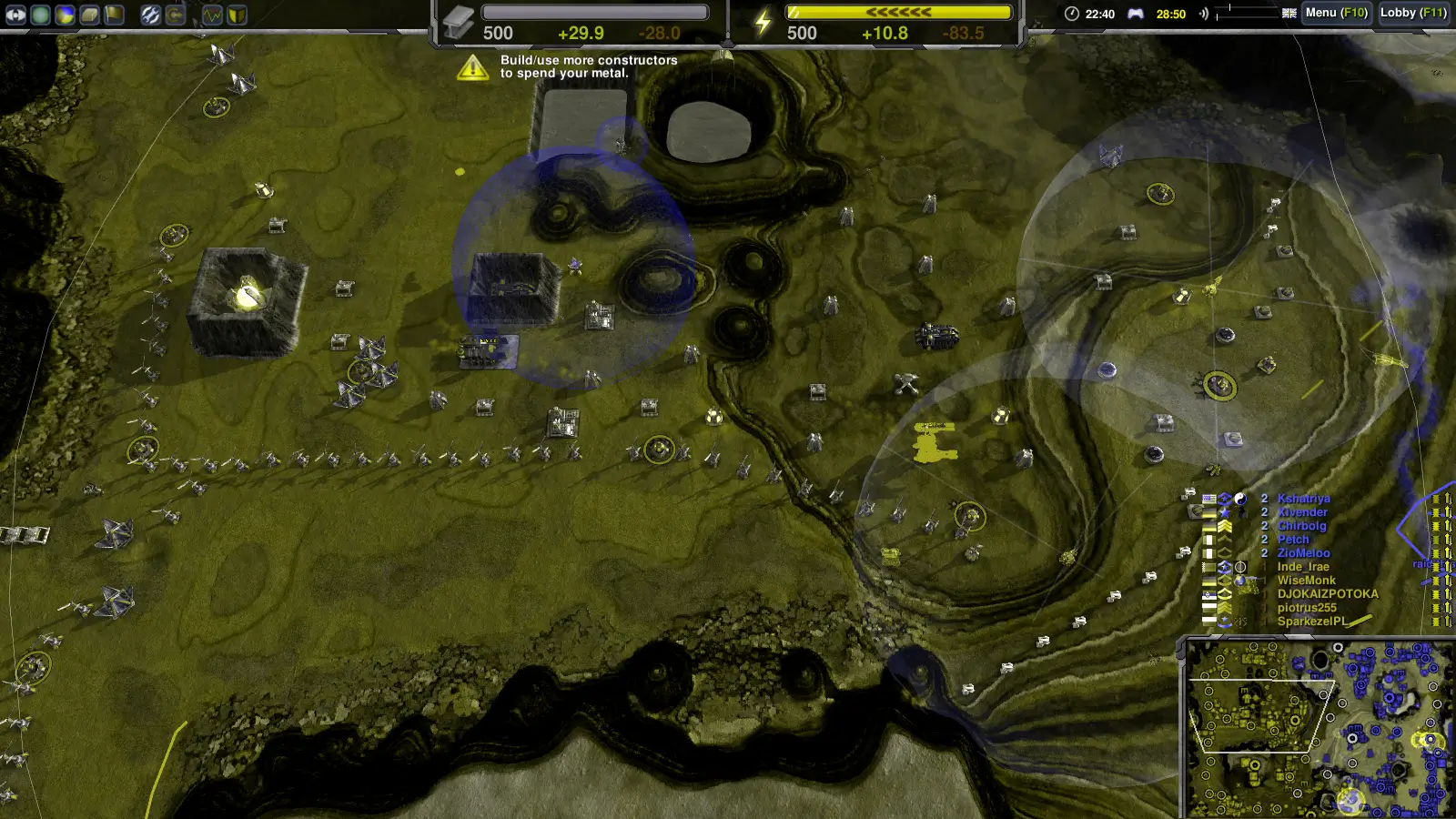
The unit that you first start building your base with is called your Commander, who can both build and engage in combat with various special abilities. What I love about the Commander is that it is essentially an RPG-like “hero” type of unit, and you can not only level him up in-game, but you can also give him a custom name and choose his special abilities upon leveling up, such that each game your Commander might have a totally different battlefield role.
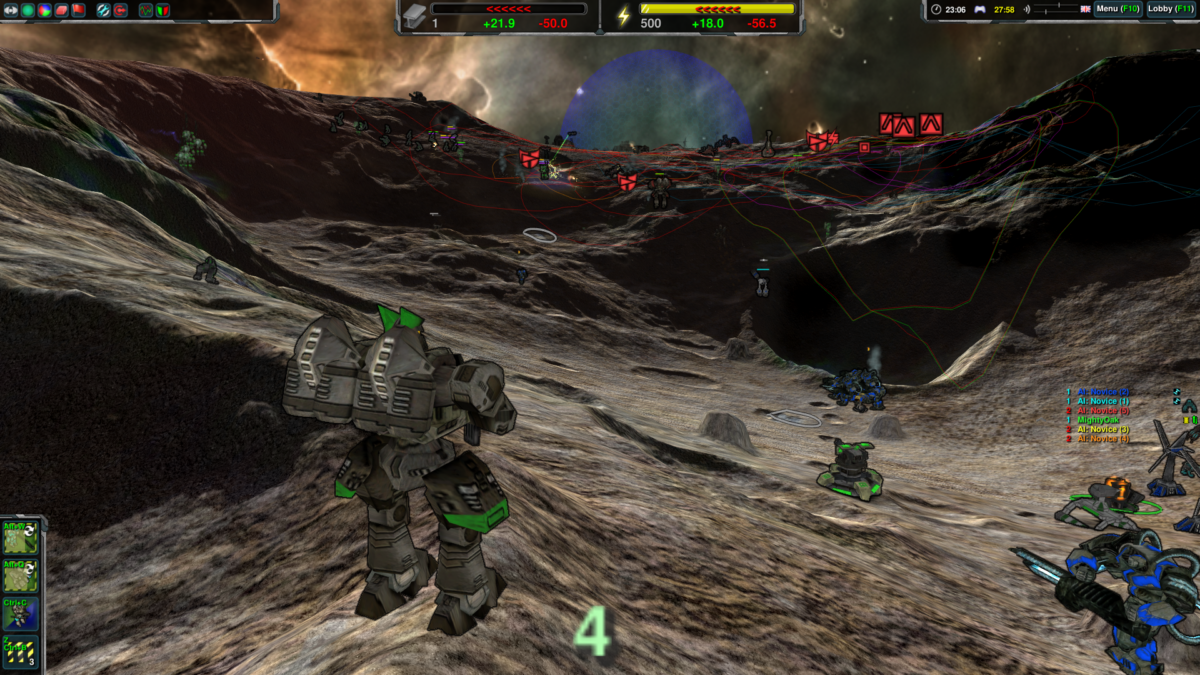
Your chosen commander (out of four different basic types: Engineer, Recon, Strike, and Guardian) can form an essential part of your strategy since it has good damage and health in the early game and can simultaneously put up defenses and other buildings on the frontline. You must use precious resources to level up your commander, however, so it’s always a tradeoff.
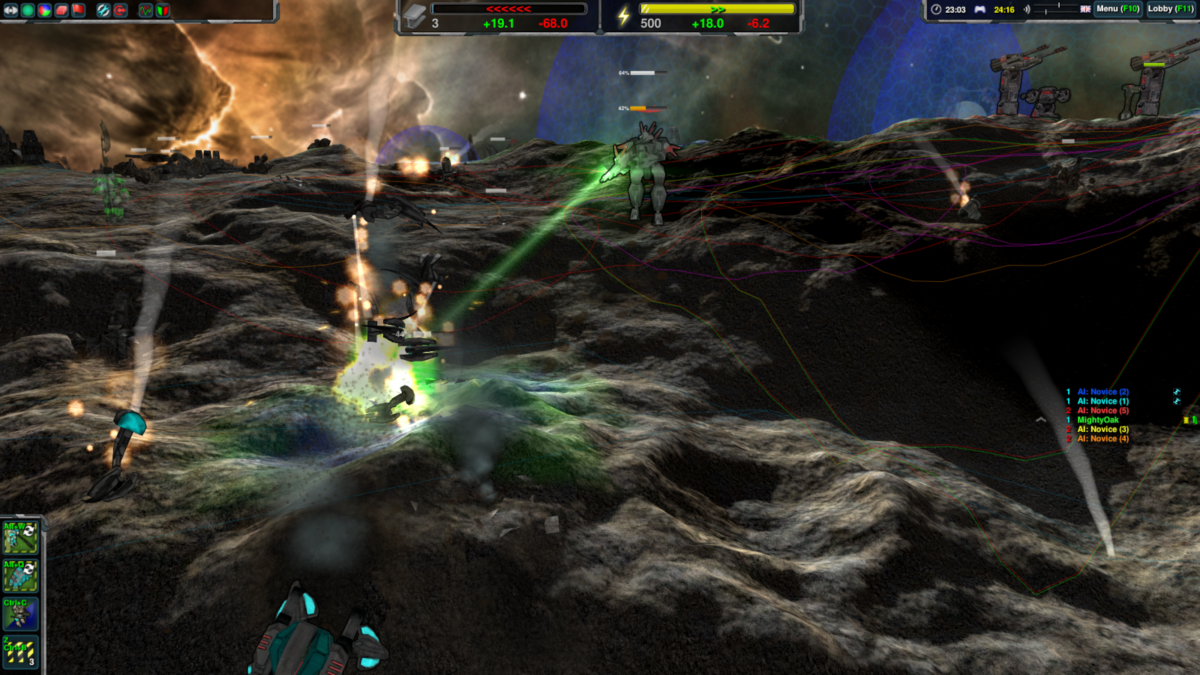
Economy
The economy system is based on two types of resources: metal and energy. I must admit that it took me quite a while to grasp it all, even though it is not too complicated. Metal is mined from metal extractors which are equally distributed around the map, making expansion a major part of your strategy.
Energy, on the other hand, is collected by various buildings (solar collectors, wind/tidal generators, fusion reactors, and singularity reactors) and each energy building must be linked to all the others. Energy is used for various purposes such as powering shields and cloaks, but most importantly, the more energy you have, the faster your metal extractors work.
Reclaiming the metal from the wrecks of destroyed units and buildings is another absolutely critical part of your economy. This ensures that pure map control isn’t the only winning condition, as a mighty comeback can be made simply by reclaiming a wreckage field.
Terraforming
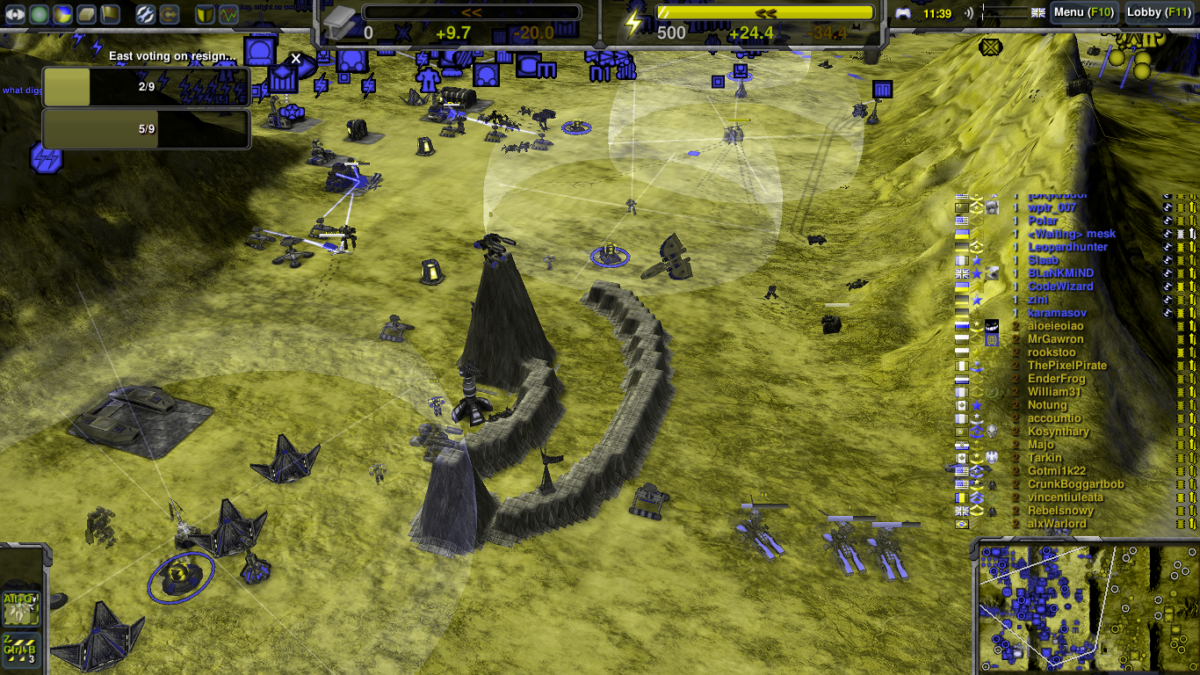
One well-placed wall can make all the difference. But why not a well-placed mountain? With Zero-K’s terraforming feature, any amount of surface on the map can be lowered or raised, and doing so can drastically change the terrain to your advantage. Of course, you are still restricted by the cost of terraforming, so you can’t go too wild, but it’s something that makes the gameplay really special when compared to other RTS games.
Cool units and buildings
As I’ve mentioned, a great aspect about Zero-K is that there are tons of units, each with different strengths, weaknesses, and counters. To give you a teaser, here are a few of my favorites.
Scythe
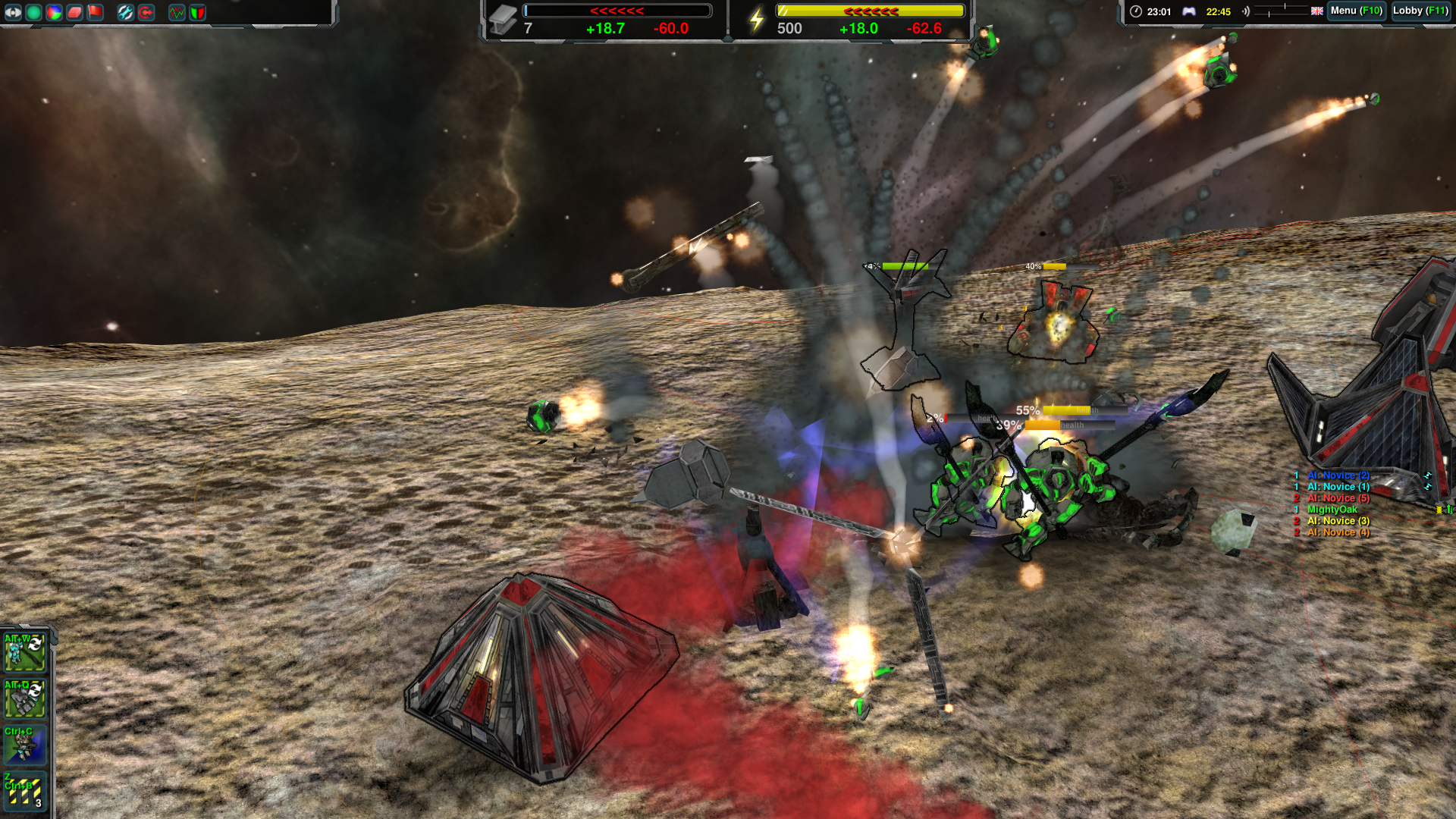
A jogging humanoid mech with giant blades. And they’re invisible. They’re like the melee version of the Phantom (an invisible sniper) and they work best in groups, ripping lone tanks to shreds or taking out high-value targets deep within enemy lines. The “Schwing!” of a Scythe is bound to attract notice.
Puppy
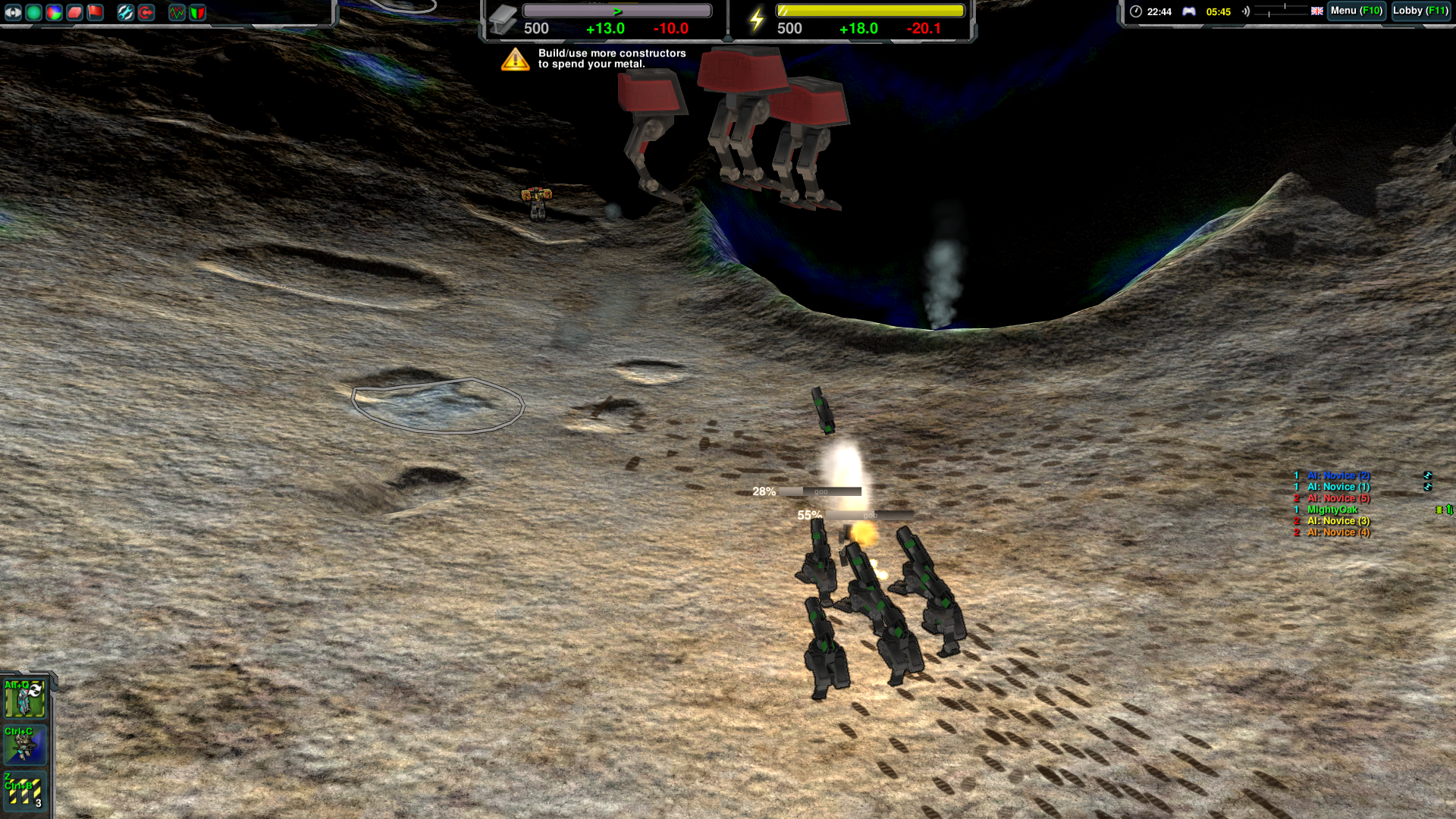
A disposable missile on legs. It just runs up to the target and fires itself at it. It’s hilarious. Oh, and they multiply on the battlefield, assembling clones from wreckage.
Big Bertha
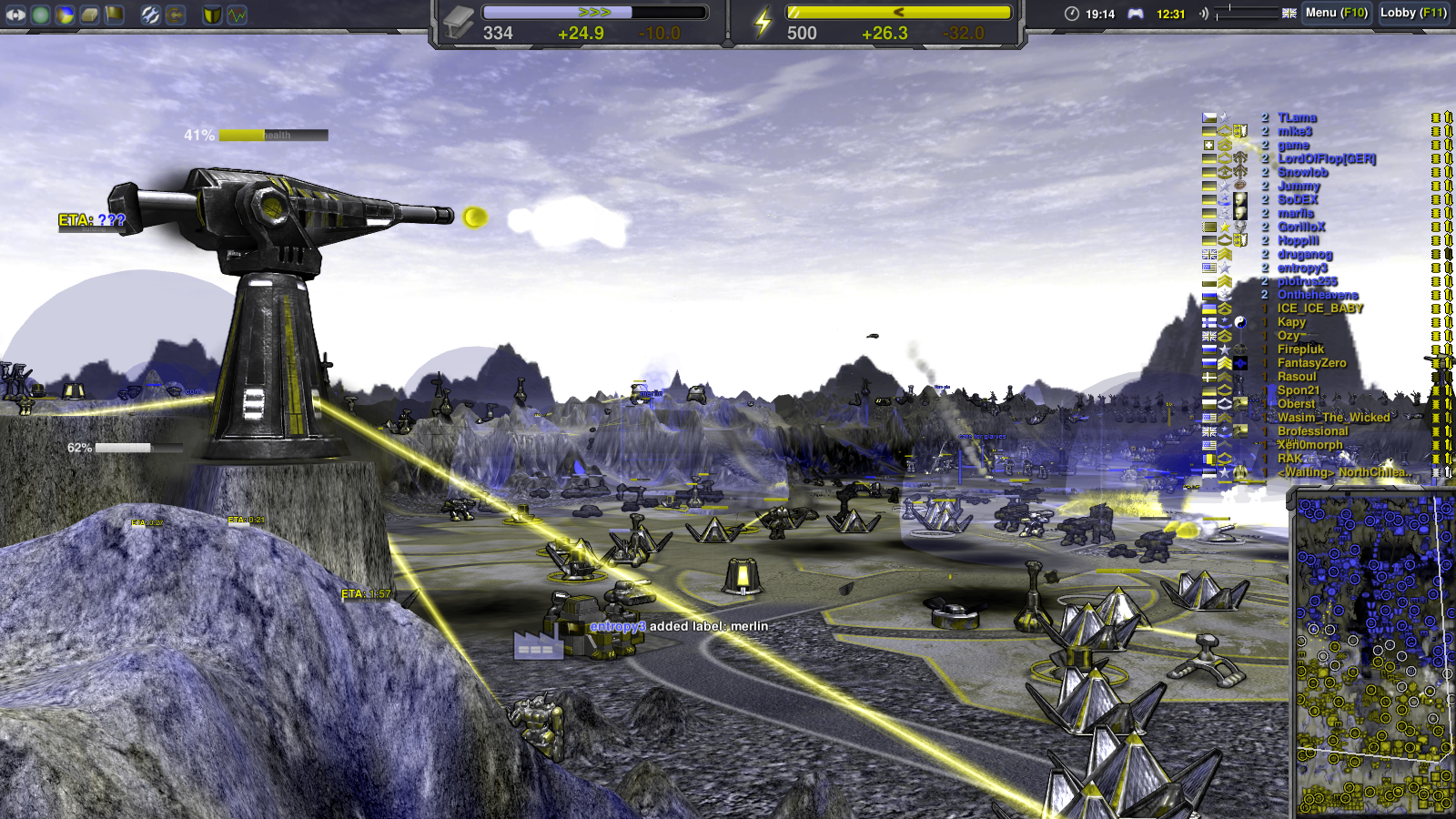
The Big Bertha isn’t a unit, it’s a building; a special turret, in fact. But it’s so ridiculously big that it is able to shoot all the way across most maps. It’s what you’d get if you recycled all the metal of a few large tank units and reforged them into a huge cannon, no wheels or tracks needed.
Crab
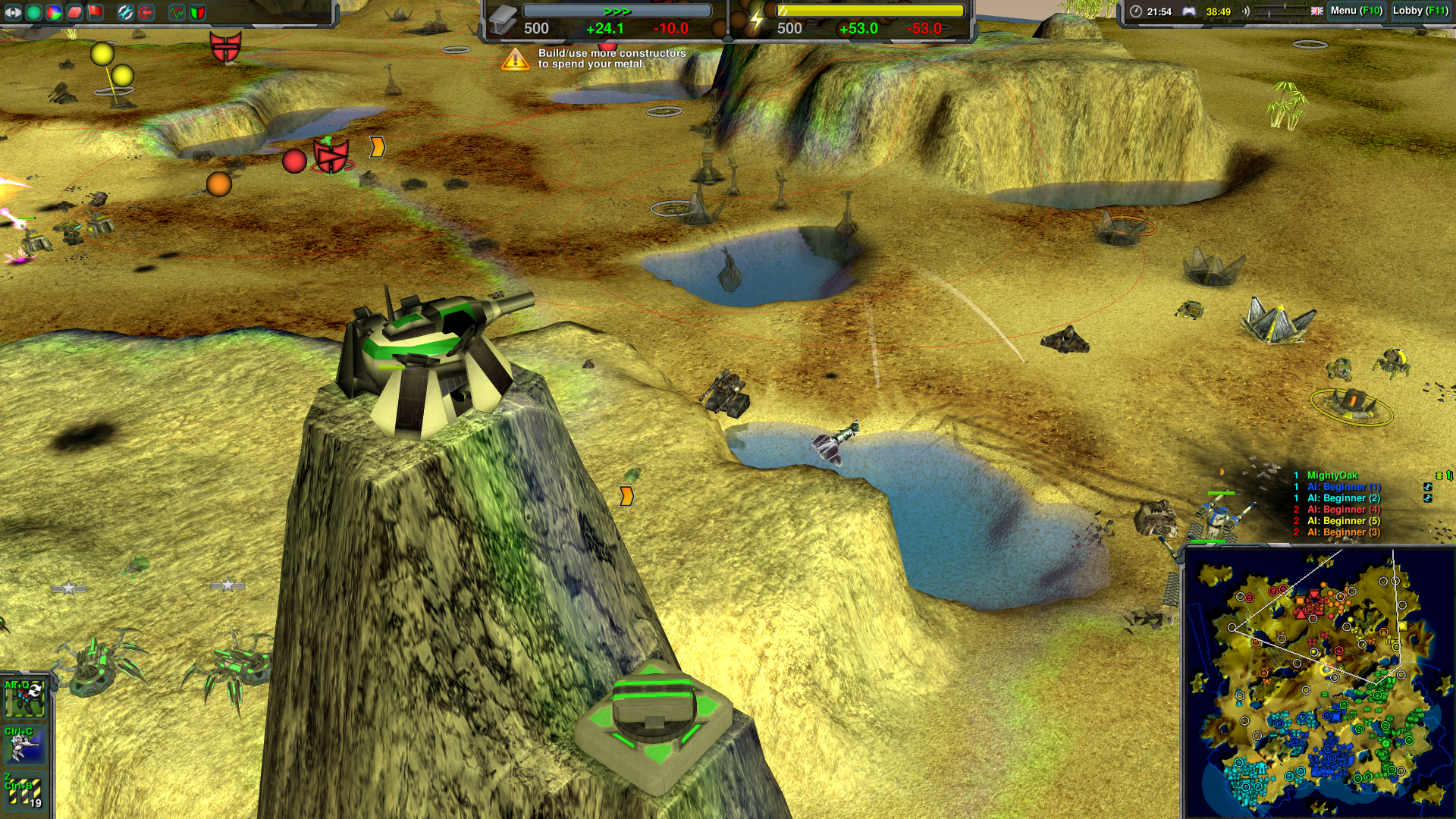
The Crab is a heavily-armored, all-terrain cannon-tosser that you can build in the Spider Factory. Its turret can swivel around and shoot a great distance from just about any cliff or mountain peak, and it gets even more armor once it has been deployed.
Detriment
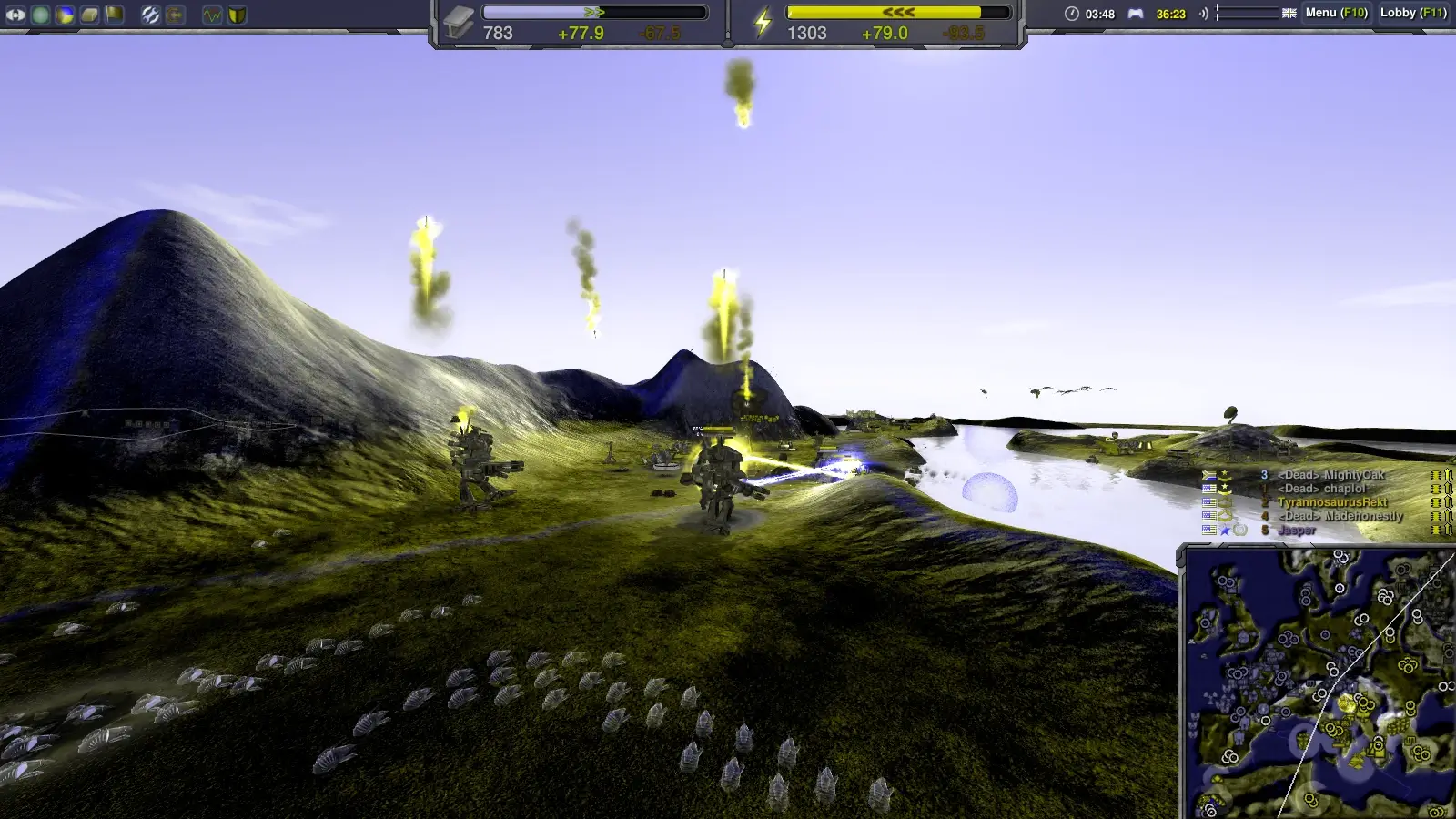
As the biggest late-game unit, the Detriment is a real showstopper if you can manage to get it built before being scouted. Besides its immense health and devastating weaponry, it is also able to jump and crush lesser units and buildings.
Graphics
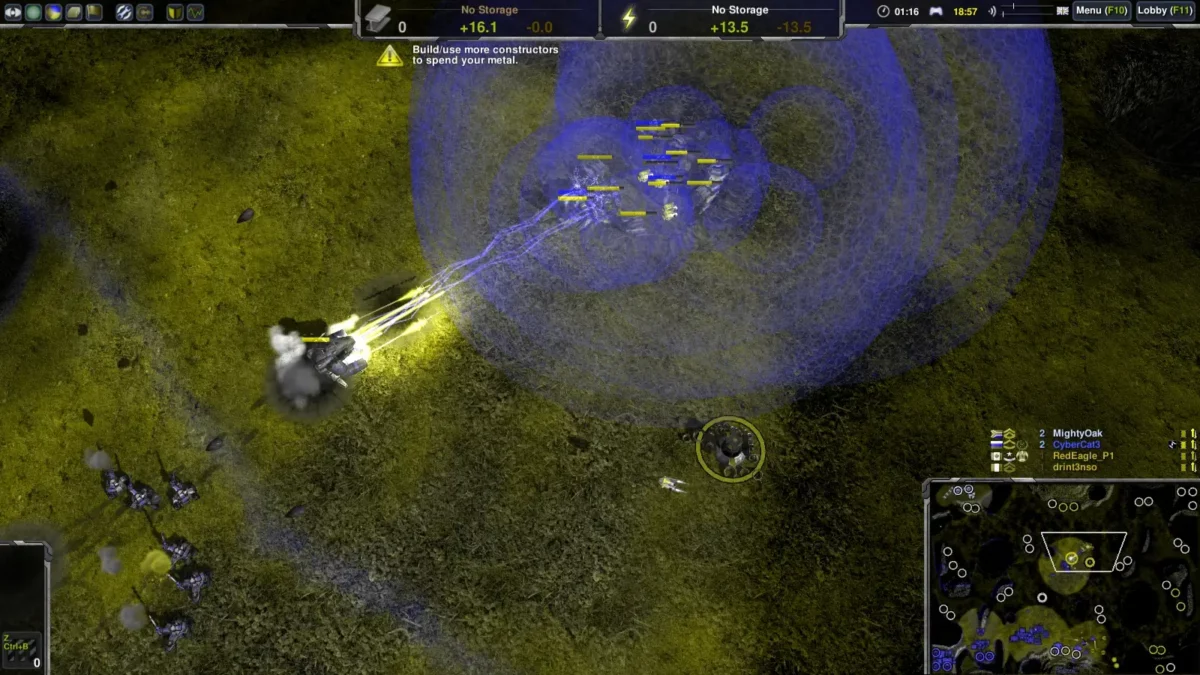
For a free RTS game, you normally wouldn’t expect much in the way of incredible graphics. Yet Zero-K’s graphics are very impressive nonetheless. Having played the game both on a desktop gaming rig and a modern but mediocre laptop, the overall graphics style can come off as slightly cartoonish on any graphics setting, which is fine with me because it’s a science-fiction game with a bit of a sense of humor as much as it tries to come across as serious. Plus, this impression seems to have a lot to do with the design and special abilities of various units, such as the Jugglenaut, which is as hilariously fun to play with as its name suggests.
The default overhead camera view is typical for most RTS games, but you can also change to First-Person camera mode which lets you get close to the battlefield and look around at will with your mouse. I haven’t found the First-Person camera very useful but it is nice to play around with perspectives at times.
Along with a good assortment of graphics settings to tweak to your liking, there are also a few unusually helpful settings you don’t find in other games, such as the colorblindness options, and the ability to set up Stereo3D (for use with 3D glasses).
Review Summary
Wrapping up, here’s a list of some of the aspects that I like and don’t like about Zero-K, briefly condensed.
Highlights
- Fun multiplayer that never gets boring: Just when you thought you’ve seen it all, a player will come out with a tactic so unexpected that you can hear the sound of jaws dropping on both teams.
- Good online community: The experienced players are always happy to help newbies learn the ropes, even if they can be a bit, ahem, abrupt at times.
- Lag is a non-issue: It doesn’t matter if you have high ping because there is little noticeable delay up to 500ms ping.
- Great unit AI: Effortless unit-in-action AI, if sometimes overzealous when you just want them to hold a position and not wildly charge into unknown territory, having been lured out.
- Neat formation functionality: Drawing formation lines and patrol paths is a breeze.
- Camera view freedom: Choose to view the battlefield in normal overhead view or get into the action with an FPS perspective camera, among others.
- Customize all the things: Don’t you hate when games only give you some of the many options you would like to change about the game? Zero-K can be tweaked six ways from Sunday.
- Many factories to choose from: There’s a huge variety of units which makes for interesting matches and endless strategies.
- Tons of maps to download: And all free, to boot.
- You can draw on the map: Communicating with teammates is greatly enhanced by the ability to label and draw anything, anywhere on the battlefield.
- Accessibility for color blind players: There are color presets specifically targeted at different types of color blindness. Also, there are a lot of general accessibility features that you can adjust to make the game perfectly comfortable for you.
Lowlights
- Campaign can be really difficult: But that’s why it’s there: to teach you how to play better, and it helps you prepare to take on experienced players in multiplayer.
- Economy system is confusing at first: Mentally juggling metal, energy, and build power is tough at times. But maybe that’s just me! If you take the time to learn the economy mechanics well, you should be fine.
- Learning curve when mastering the different factories: There are over 100 units. Which is actually a good thing, but it takes time to learn about them all.
- Could perhaps benefit from optimization: Using a Ryzen CPU with a GTX 1070 Ti, 16 GB RAM, and an SSD hard drive, the game sometimes slowed down to less than 30 FPS in large games with high-ish quality settings. On the other hand, it performs well enough on even a standard laptop with lower quality settings. Your mileage may vary.
- Players can be trigger-happy on the resign button: In team games, it can be a bit hard to try a comeback when your teammates keep insisting that all allies must resign because “all is lost”. And yet, I can accept it. At some point it becomes very clear that you must throw in the towel.
- Reconnecting to a game is slow: It takes a long time to catch up to the current game state in multiplayer mode after disconnecting for whatever reason, even for a few seconds. Thus, a stable internet connection is essential.
Rating: 91/100
Zero-K is an RTS where you get way more than you bargained for, given that it’s a free game. Think StarCraft II, but for thrifty gamers. This game is cooler than ice and joyfully addicting, but do beware that the time taken to master it is no small number of hours. Every game has its faults, and so, too, does this one, but they are easy to overlook when you take it for what it is and have fun regardless.
Its biggest highlight, I think, is that it feels like a game that you own, but not in the sense that you bought it. Rather, it feels like you own it in the sense that you can uniquely express yourself through both the gameplay and its many customization options. And at the end of the day, in addition to a long-time thriving community, it delivers exactly what many competitive RTS fans want: a solid, action-packed game of real-time strategy.

Frank Wardin is a journalist from outer cyberspace, keeping you up to date with the news and goings-on of digital society.
